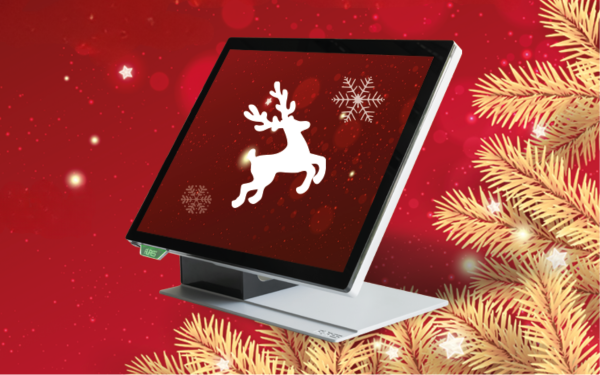It’s that time of year again! The season of goodwill, of festive cheer, and not to forget the season of giving, of course.
It’s been another rollercoaster year across the retail, hospitality and leisure industries. Businesses continue to operate in a tough economic climate and consumer confidence remains low thanks to the ongoing cost of living crisis.
On the other hand, inflation has fallen dramatically from the peaks it reached last year, and despite all the predictions, the UK economy has just about avoided slipping into recession.
But whatever is going on in the wider economy or across markets, our mission here at AURES doesn’t change. We’re here to supply our clients with the POS solutions you need to make your businesses the best they can possibly be, by delivering the best possible experiences to your customers.
POS is certainly an interesting place to be at the moment. The technology continues to evolve at pace, and there are sure to be more and more fascinating developments in terms of what transactions and service look like in the coming years.
If you’d like a snapshot of how things are looking in the here and now, we’ve pulled together the following list of POS facts and figures – our little gift to share with you this Christmas.
Seasons greetings, one and all!
- For all the buzz around e-Commerce, demand for in-store POS hardware terminals continues to grow. The global POS terminal market is forecast to grow by a CAGR of 8.23% between 2022 and 2027, adding some US $46bn in value. That’s no mean rate of growth considering ‘bricks and mortar’ commerce is supposedly in decline!
- A significant portion of that demand will be driven by the need to replace legacy hardware. 40% of POS hardware currently in use is more than five years old.
- Replacing legacy hardware is a top priority for businesses. 44% of retailers say updating old hardware is their top priority for POS investment, second only to upgrading software (60%). 43% of restaurant owners say they plan to research and text new POS systems in 2024.
- Demand for mobile POS (mPOS) solutions will account for a significant chunk of the POS hardware market’s growth. Sales of tablet-like mPOS terminals are set to increase by 11% year-on-year up to 2030.
- SMEs are poised to drive that growth in mPOS demand. Businesses with fewer than 10 locations account for two thirds of all mPOS adoptees. The combination of lower costs and added flexibility make mPOS solutions the perfect small business solution.
- In other mobile-related news, digital wallet apps are poised to become the number one payment method worldwide. By 2026, payments made via mobile apps will account for 46% of all transactions, up from 32% in 2022. That figure covers both online and in-store/in-person payments.
- POS represents the most valuable data source bricks-and-mortar businesses have at their disposal. According to the Motley Fool, POS transaction data accounts for half of the overall data value available to retailers and hospitality businesses.
- Kiosks are another significant driver of POS hardware growth. The global self-service kiosk market is forecast to grow 8.71% year on year up to 2028.
- Kiosks are a win for customer experience. There’s no better way to judge whether you’re giving your customers what they want than by asking them directly. In the QSR sector, 65% of customers say they prefer ordering through kiosks than by speaking to a member of staff. Across the board, 81% of people would like to see more self-service options in retail, hospitality and leisure venues.
- Even better, kiosks are a win for boosting order size. Again in the restaurant sector, the option for customers to customize their order via a kiosk – and trust they will get exactly what they want – has resulted in reports of average order values increasing by up to 30% in some cases. In retail as in hospitality, kiosks can boost order value by delivering automated, targeted upsell and and cross-sell recommendations.
- Looking beyond transaction-based POS systems, another major area of growth is the use of digital signage for wayfinding. This market is expected to grow by 16% year on year to 2028.
- Similarly, digital shelf displays for pricing and product information will see rapid growth. In the region of 21% CAGR in the five years to 2026, in fact. Having digital shelf displays as an extension of your POS and inventory system dramatically speeds up changes, opening the door to more agile pricing and merchandising.




